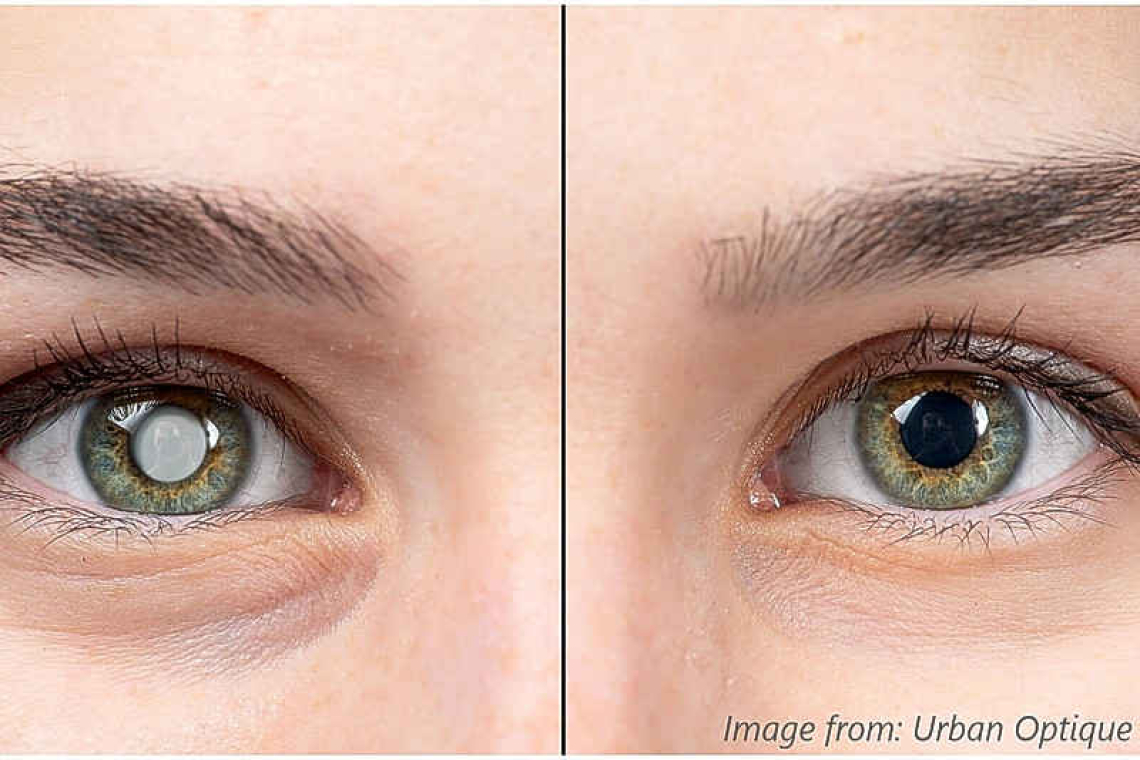By Dr. Colin Michie FRCPCH University of Central Lancashire
Our eyes send about 60 picture frames a second to the brain, working at about the same speed as an Ethernet connection. This digital messaging is created by our retinas. Images of what we are looking at, our vision, is focused onto the retinas by the corneas and lenses. Lenses are dynamic, biconvex, elastic, crystalline discs, about a centimetre across, suspended at the front of the eye, just behind the pupils – those keyholes to our souls!
You have more protein per weight of tissue in your lenses that anywhere else in the body – 70% is made up of clear, crysallin proteins. These are particularly long-lived molecules, specially layered so that the lens can focus effectively and rapidly. Cells in the lens centre, behind the pupil, move their nuclei and other structures to the sides so the lens works like a disc of biological glass. For an object close to you, the lens is thicker: it is thinner for distance vision. These changes can take place rapidly – imagine how it all works in sports, for instance a ball game, or racing a boat!
The optical power of the eye is approximately 60 dioptres, a measure of how the curved cornea and lens focus images onto the retina. About two thirds of this power comes from the cornea. The lens is more powerful when we are young, but after the age of 50 it contributes less to this process of focusing or accommodation.
Cataracts are a common cause of loss of vision in older people. An estimated 30% of those over 65 years of age will develop them, usually in both eyes. It is a leading cause of blindness and visual impairment. It is estimated that for every million population in Latin America and the Caribbean, 5,000 are blind and 20,000 are visually impaired. At least 66% of the blindness is attributable to treatable conditions such as cataract. Visual impairment was noted to be a common disability in the health review in St. Maarten in 2017.
Cataracts cause the lenses to become cloudy, usually slowly. This will influence your quality of life, typically causing a change in colour perception, making the world a little more yellow or brown, possibly blurry too. Double vision, reduced night vision and glare around light sources can also become troublesome. Early treatment is more effective, so if you or someone you know has these changes to their vision, please seek an eye check. Those over the age of 55 are recommended to have one every 1-3 years.
Lens deterioration and damage may be delayed by protecting those crystallins! Stopping smoking, reducing blood sugars and protecting the eyes from ultraviolet light are all useful measures – these conditions all damage the lenses. Hats and sunglasses are in! Diet may well be influential too: the intake of blueberries or other sources of anthocyanins are beneficial for many aspects of eye health. However no medications cure cataracts: surgery is the recommended way to bring back vision. While awaiting operation, adaptations help, such as improved lighting and using a magnifying glass to read. Avoiding falls, along with providing social supports become particularly important – a white cane will be helpful.
Removing cataracts surgically is a safe, standardised, rapid procedure that does not need a general anaesthetic. 95% of operations take 10-15 minutes. The clouded lens is broken up and extracted through a tiny incision in the side of cornea. A replacement plastic lens sits in the same position. In some situations, both eyes may be operated on at the same time. Complication rates are very low. Most patients find the world looks particularly blue for the first weeks of recovery. Colour sight resolves as the retina adjusts and provides a better image.
Implanting a plastic lens was first used in 1949 by the surgeon Ridley, operating on fighter pilots in the United Kingdom (UK). He had observed that his patients sometimes had areas of clear vision when they had plastic embedded in the front of an injured eye. His first trial lens was made of Perspex: a range of different products have since been employed. Historically an operation called “couching” was performed by some community surgeons or healers. This involved dislocating the lens and pushing it into the cavity at the back of the eye. However this was a risky and often unsuccessful way of solving a problem that now can be more reasonably managed.
Those with cataracts often require help and support with daily tasks; waits for cataract surgery can be long and challenging. Communities in St. Maarten should continue to check that citizens wear sunglasses, and guide and care for those with visual impairment.
Useful resources: “Making a decision about Cataracts” and “Overview-Cataract surgery”, both on the National Health Service (UK) website: www.nhs.uk.
Dr. Colin Michie is currently the Associate Dean for Research and Knowledge Exchange at the School of Medicine in the University of Central Lancashire. He specialises in paediatrics, nutrition, and immunology. Michie has worked in the UK, southern Africa and Gaza as a paediatrician and educator and was the associate Academic Dean for the American University of the Caribbean Medical School in St. Maarten a few years ago.







